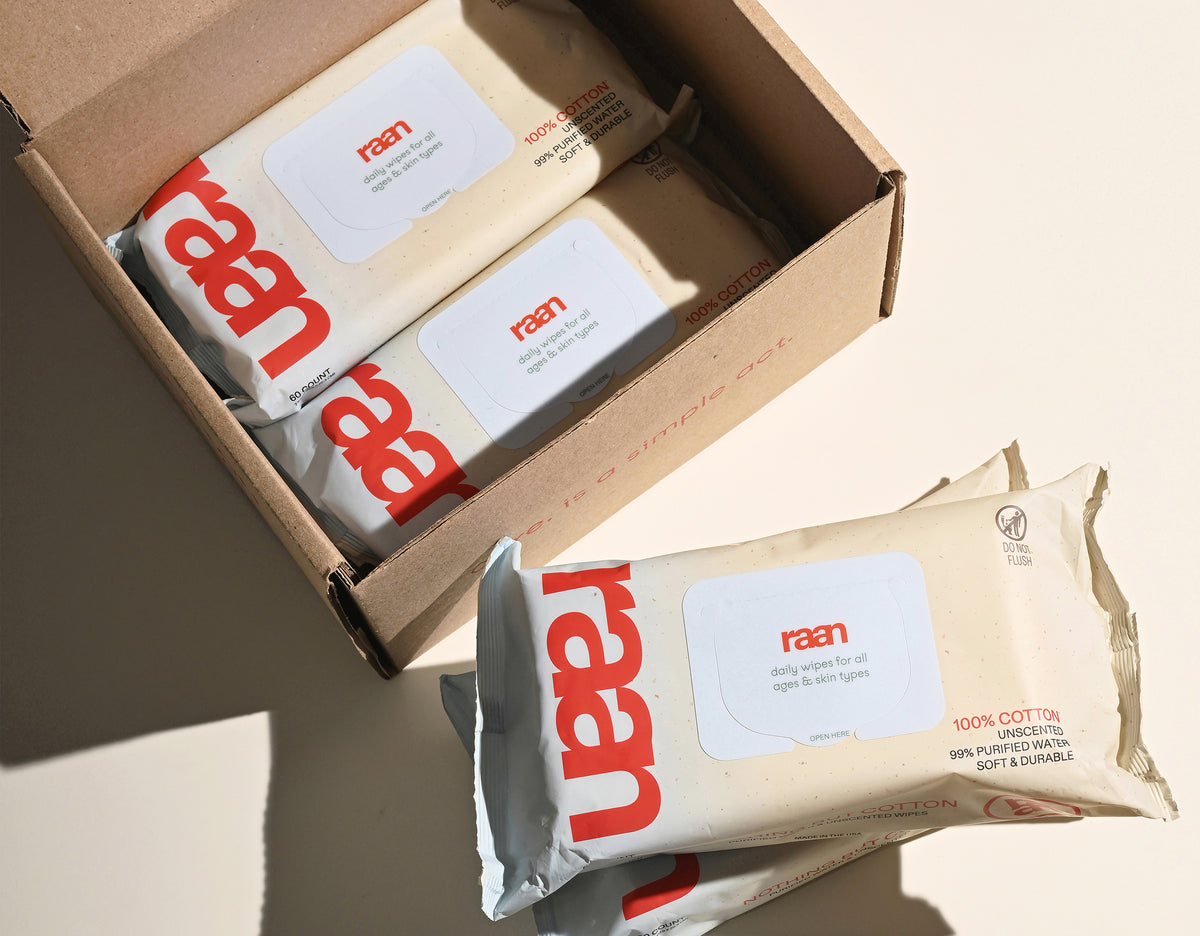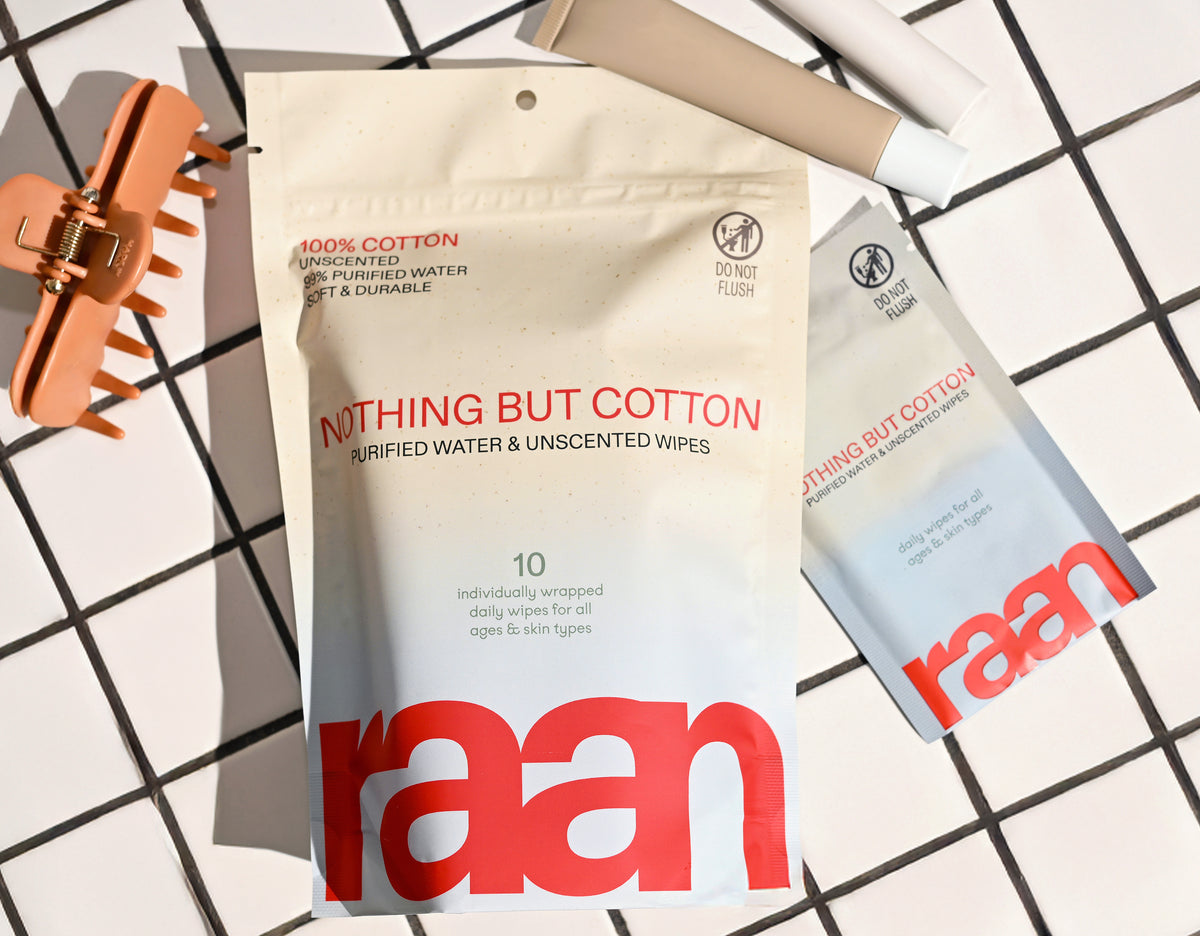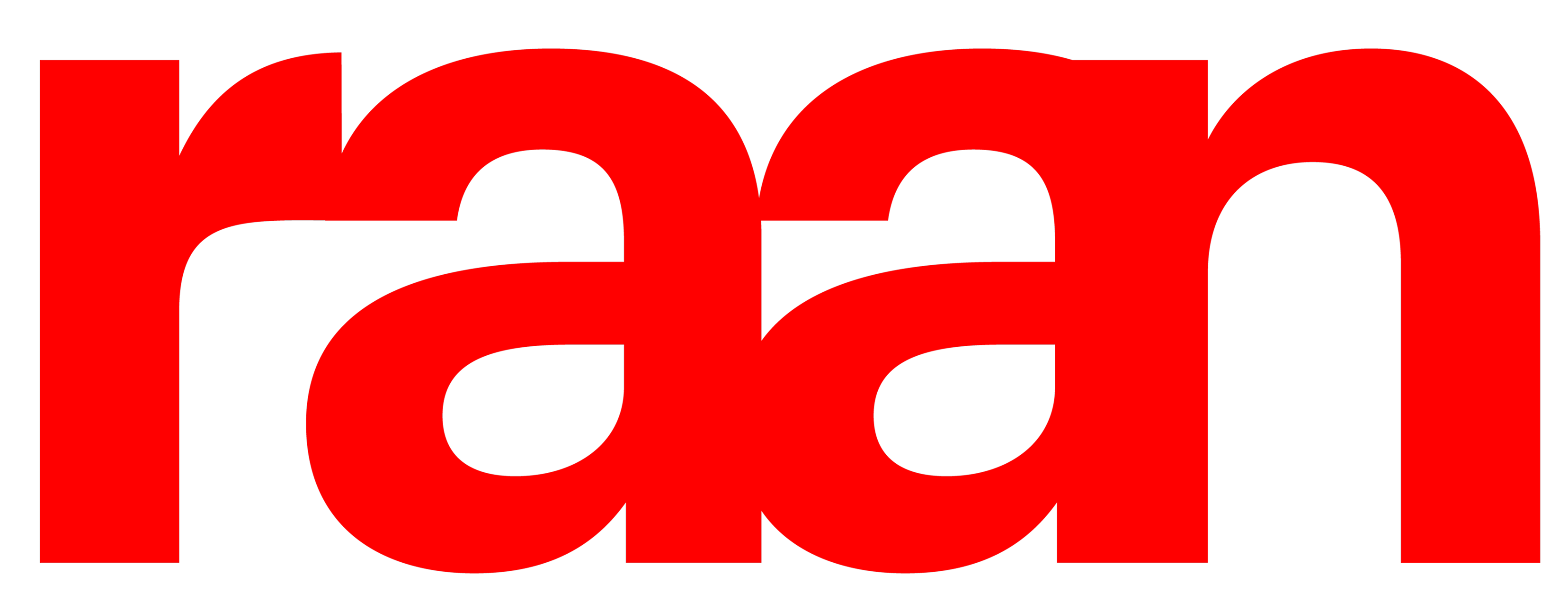Why "Non Toxic" Matters for Everyday Life
You know that daily mess - spilled coffee, sticky fingers, pet accidents, the endless cycle of wipes and cleanups. But what about the mess you can't see? The chemical residue left behind by products we trust to keep our homes and families clean?
Key Takeaways
- Daily messes like spills and sticky fingers are a common part of life for new parents.
- Cleansing products can leave behind invisible chemical residues in the home.
- Choosing non-toxic cleaning options helps reduce exposure to harmful chemicals.
- Protecting your family’s health starts with being aware of what cleaning products contain.
Table of Contents
- Why "Non Toxic" Matters for Everyday Life
- What Does "Non Toxic" Actually Mean?
- The Fine Print: Limitations of the "Non Toxic" Label
- Non Toxic vs. Toxic-Free - What's the Real Difference?
- Non Toxic in Daily Living: Hidden Sources and Hidden Risks
- How to Shop Smarter: Finding Truly Non Toxic Products
- Non Toxic Wipes by Raan - What Sets Us Apart
- The Power of Real Transparency
Walk down any cleaning aisle, and you'll spot "non toxic" labels everywhere. On wipes, sprays, detergents, even toys. It sounds reassuring, but here's the thing: that label doesn't always mean what you think it means.
At Raan, we believe in simplicity, transparency, and integrity - especially when it comes to the products touching your skin and your family's skin every single day. We're here to cut through the marketing noise and give you the real story on what "non toxic" actually means, where it falls short, and how to make genuinely informed choices.
Because when you're wiping down a highchair or cleaning up after a diaper blowout, you deserve to know exactly what you're bringing into your home.
What Does "Non Toxic" Actually Mean?

"Non toxic" means not poisonous or harmful to humans, pets, or the planet. It's that simple - in theory.
The term originally emerged from art supplies and industrial products, where manufacturers needed to distinguish between materials that could cause immediate harm versus those considered safe for everyday use. Think non toxic crayons for kids or non toxic paint for nurseries.
Today, you'll find "non toxic" stamped on everything from cookware and cleaning wipes to toys, household cleaners, and baby products. It's become shorthand for "safer choice" - a signal that a product won't poison you or your family.
Key fact: The term "non toxic" has been used in consumer products since the 1970s, but it still lacks a universal, legally binding definition across all product categories.
For new parents especially, "non toxic" feels like a safety net. When you're choosing wipes for delicate newborn skin or cleaners for surfaces your toddler will inevitably lick, that label offers peace of mind.
But here's where it gets complicated: not all "non toxic" claims are created equal.
The Fine Print: Limitations of the "Non Toxic" Label
Here's the uncomfortable truth: there's no official, across-the-board definition or oversight for "non toxic" in the United States. Unlike terms such as "organic" (which has USDA standards), "non toxic" operates in a regulatory gray area.
The Consumer Product Safety Commission (CPSC) does set toxicity thresholds for certain products, particularly those designed for children. But these standards focus on acute toxicity - meaning immediate harm from a single exposure. A product can still cause irritation, allergic reactions, or long-term health concerns for some people and still earn a "non toxic" label.
The reality check: "Non toxic" often means "safe for most people under normal use" - not "safe for everyone, always." If you have sensitive skin, allergies, or specific health conditions, you need to dig deeper.
This is where greenwashing creeps in. Some brands use "non toxic" as a marketing hook without the science to back it up. They might remove one questionable ingredient while keeping others, or they'll use vague language that sounds reassuring but doesn't actually guarantee safety.
The difference between "safe for most" versus "safe for all" matters enormously when you're choosing products for newborn skin, managing eczema, or dealing with chemical sensitivities. What's considered non toxic for the general population might still trigger reactions in vulnerable individuals.
That's why we go beyond the "non toxic" claim at Raan. Our wipes are EWG Verified - meaning every single ingredient has been reviewed by the Environmental Working Group's scientists for safety and transparency. No guesswork, no marketing fluff.
Non Toxic vs. Toxic-Free - What's the Real Difference?

These terms get thrown around interchangeably, but they're not the same thing. Understanding the distinction helps you make smarter choices for your family.
Non toxic typically means "minimally harmful" or "less toxic than conventional options." It's often interpreted as "safe under normal use conditions" but doesn't guarantee zero risk. A product can still contain ingredients that cause irritation or sensitivity in some people while maintaining its non toxic status.
Toxic-free aims higher - it means "as close to none detected as possible." These products undergo more rigorous testing and often carry third-party certifications. The ToxicFree Foundation, for example, requires extensive lab testing to verify that harmful chemicals are truly absent, not just reduced.
Key insight: Think of non toxic as "safer" and toxic-free as "safest available." Both are improvements over conventional products, but toxic-free sets a higher bar.
| Factor | Non Toxic | Toxic-Free | Traditional |
|---|---|---|---|
| Definition | Not immediately harmful; minimal toxicity | Virtually no detectable harmful chemicals | No specific safety claims beyond legal requirements |
| Oversight | Self-reported by brands; minimal regulation | Often third-party certified (ToxicFree Foundation, Made Safe) | Basic safety standards only |
| Typical Use Cases | Everyday cleaning, baby products, personal care | Sensitive skin products, medical-grade items | Standard household and personal care products |
| Consumer Assurance | Moderate - depends on brand transparency | High - rigorous testing and certification | Low - minimal safety information provided |
| Price Point | Moderate premium over traditional | Higher premium for certification costs | Most affordable option |
| Verdict | Good step up from conventional; requires label reading | Best choice for sensitive individuals; highest safety standards | Basic safety only; may contain harsh chemicals |
Quick answer: Is "non toxic" enough? For most families, yes - if you choose brands that back up their claims with ingredient transparency and third-party certifications. At Raan, our wipes are both non toxic and EWG Verified, giving you the safety assurance without the premium price of fully toxic-free certification.
The reality is that truly toxic-free products are rare and expensive. Most families do well with genuinely non toxic options that prioritize transparency, like our unbleached, 100% cotton wipes with just five carefully chosen ingredients. No plastic fibers, no synthetic fragrances, no guesswork - just what your skin needs and nothing it doesn't.
How to Shop Smarter: Finding Truly Non Toxic Products

The non toxic market is flooded with half-truths and clever marketing. Here's how to cut through the noise and find products that actually deliver on their promises.
1. Read the Label - But Don't Stop There
Full ingredient lists are your first line of defense. If a product claims to be non toxic but won't tell you what's in it, that's a red flag. Look for brands that list every ingredient, not just the "active" ones.
Red flags to watch for: Vague terms like "fragrance" or "proprietary blend," numbered chemicals without names (like "FD&C Red No. 40"), and ingredient lists that seem suspiciously short for complex products.
At Raan, we list all five ingredients in our wipes: purified water, sodium benzoate (food-grade preservative), potassium sorbate (food-grade preservative), ethylhexylglycerin (skin-conditioning), organic aloe, and citric acid for pH balance. No mystery ingredients, no fine print.
2. Check for Third-Party Certifications
Certifications aren't perfect, but they're your best bet for independent verification. EWG Verified means the Environmental Working Group has reviewed every ingredient for safety. Made Safe screens for over 6,500 harmful chemicals. ToxicFree Foundation requires extensive lab testing to verify claims.
For cruelty-free assurance, look for Leaping Bunny certification - it's more rigorous than simple "not tested on animals" claims. Our wipes carry EWG Verified, Natural Cotton, and Cruelty Free certifications, giving you multiple layers of independent verification.
3. Research the Brand's Philosophy
Does the brand explain why they chose each ingredient? Do they provide scientific backing for their claims? Trustworthy companies educate rather than just market. They'll tell you not just what's in their products, but why it's there and how it works.
We believe in radical transparency - explaining why we use food-grade preservatives instead of synthetic ones, why unbleached cotton matters, and what each ingredient does for your skin.
4. Do a Quick "Tox Check"
Free databases like EWG Skin Deep and the Guide to Healthy Cleaning let you search products and ingredients for safety ratings. When in doubt, cross-reference claims quickly using these tools.
Time-saving tip: Before buying, ask yourself: Can I pronounce most ingredients? Are there third-party certifications? Does the brand explain their choices? If you get two "yes" answers, you're probably on the right track.
Non Toxic Wipes by Raan - What Sets Us Apart
We started Raan because finding genuinely safe, honest wipes felt impossible. Every option seemed to hide something - plastic fibers, synthetic fragrances, or vague ingredient lists that left more questions than answers.
Our approach is different: gentle honesty in every choice we make. No plastic fibers that create microplastic waste. No synthetic preservatives that can trigger sensitivities. No fragrances that mask what's really inside. No bleach that weakens the cotton or leaves chemical residue.
What makes Raan wipes truly non toxic:
- Unbleached, 100% cotton base - no microplastics, ever
- Just five EWG-verified ingredients, 99% water
- Food-grade preservatives only (sodium benzoate, potassium sorbate)
- Organic aloe for gentle moisturizing
- Citric acid for natural pH balance
- Ethylhexylglycerin for skin conditioning
Our certifications aren't just badges - they're promises. EWG Verified means every ingredient meets strict safety standards. Natural Cotton certification confirms our cotton is unbleached and plastic-free. Cruelty Free and Women Owned reflect our values beyond just product safety.
Even our packaging walks the walk: 70% less plastic than standard wipes (we skip the hard plastic lid), 35% post-consumer waste in our pouches, and 100% recyclable boxes. Because truly non toxic thinking extends beyond the product to how it reaches your home.
Built for real life: Whether you're cleaning newborn skin, managing pet messes, refreshing after workouts, or removing makeup, our wipes work for sensitive skin without compromise. Safe for all ages, gentle enough for daily use, effective enough for the messiest moments.
This is what "real clean" means to us - function without fear, safety without sacrifice. Less is more when every ingredient earns its place through science, not marketing.
The Power of Real Transparency
"Non toxic" isn't a magic word that solves everything - it's the beginning of a more thoughtful relationship with the products you bring into your home. The real power lies in understanding what you're choosing and why it matters.
A little fact-checking goes a long way. When you know what to look for - full ingredient lists, third-party certifications, brands that educate rather than just market - you're equipped to make choices that truly serve your family's health and values.
At Raan, our promise is simple: just what's needed, nothing more, nothing less. Five ingredients you can understand. Certifications you can trust. Materials that work with your skin, not against it. Because the best non toxic products aren't the ones that shout the loudest - they're the ones that do their job quietly, safely, and honestly, day after day.
The journey toward non toxic living doesn't require perfection. It requires intention. Start where it matters most, choose brands that earn your trust through transparency, and remember that every small swap adds up to a cleaner, safer everyday life. For more on how chemicals from household cleaners can impact your family, see this authoritative resource. You can also explore the latest news and tips on non toxic living on our blog.
Frequently Asked Questions
What chemicals are typically absent in non-toxic wipes?
Non-toxic wipes usually avoid synthetic fragrances, parabens, phthalates, bleach, plastic fibers, and harsh preservatives. They steer clear of ingredients linked to irritation or environmental harm, focusing instead on minimal, EWG-verified components that prioritize skin safety and biodegradability.
How can I confirm a wipe is truly non-toxic?
Look for clear ingredient lists with familiar, simple components and certifications like EWG Verified or Natural Cotton Seal. Transparency about sourcing, formulation, and packaging-without vague marketing claims-is key. Trusted brands share detailed info on preservative types, materials, and testing to help you make an informed choice.
Are non-toxic wipes fragrance free?
Yes, genuinely non-toxic wipes are fragrance free to reduce the risk of irritation and allergic reactions. Instead of masking scents with synthetic fragrances, they rely on clean, simple ingredients that don’t need added scent, making them safer for sensitive skin and everyday use.
Do non-toxic wipes expire faster without preservatives?
Non-toxic wipes do contain preservatives, but only food-grade, skin-safe ones like sodium benzoate and potassium sorbate, which are effective yet gentle. Without any preservatives, wipes would spoil quickly, so a minimalist but functional preservation system ensures safety and shelf life without compromising non-toxicity.
What benefits do non-toxic wipes offer over standard wipes?
Non-toxic wipes offer a simpler, safer clean with fewer irritants and no plastic fibers, making them gentle on sensitive skin and better for the environment. Their transparent formulas and packaging reduce exposure to unnecessary chemicals and waste, supporting a cleaner, more honest daily routine that works for new moms, pet owners, and anyone wanting real care.






